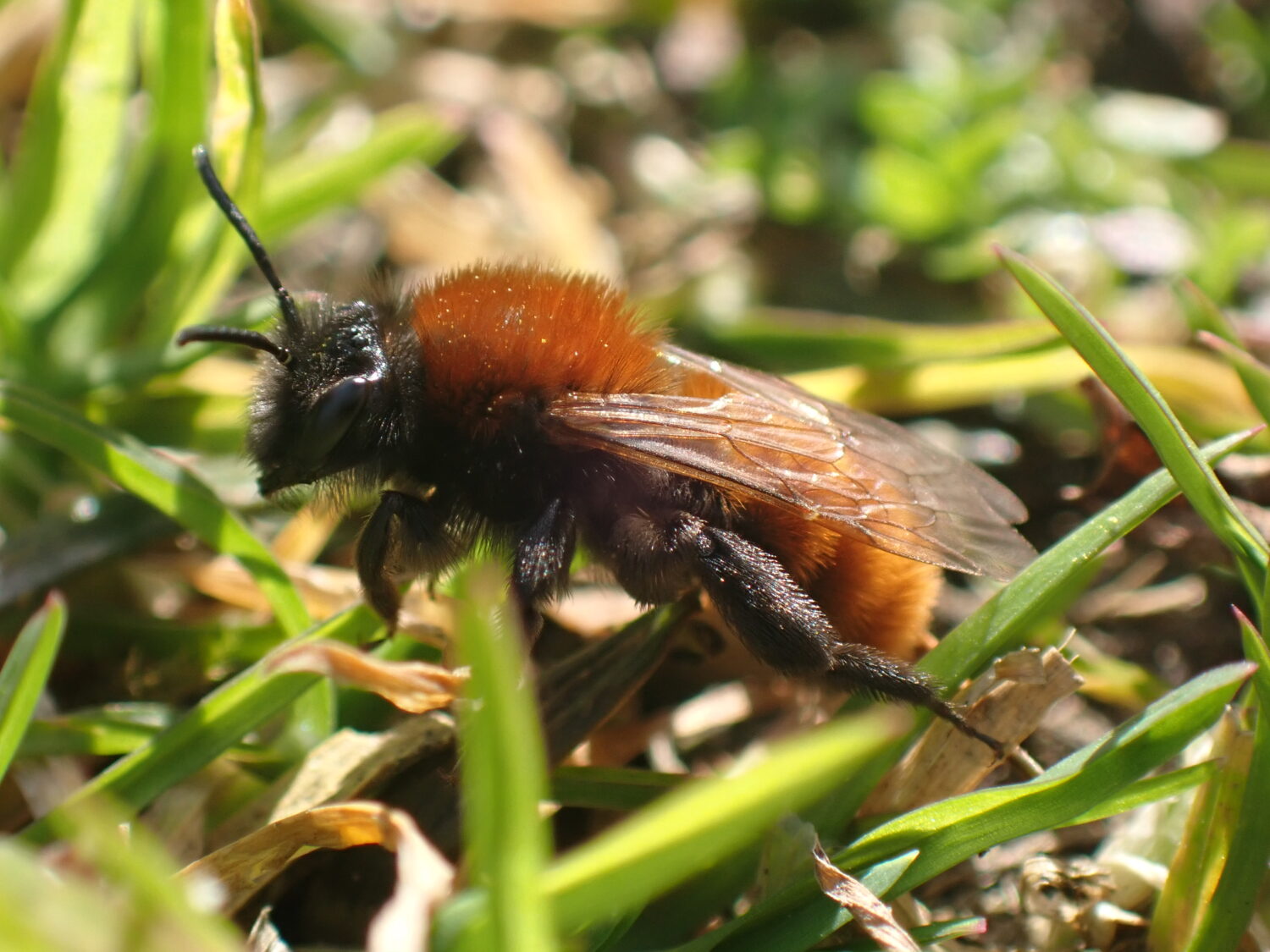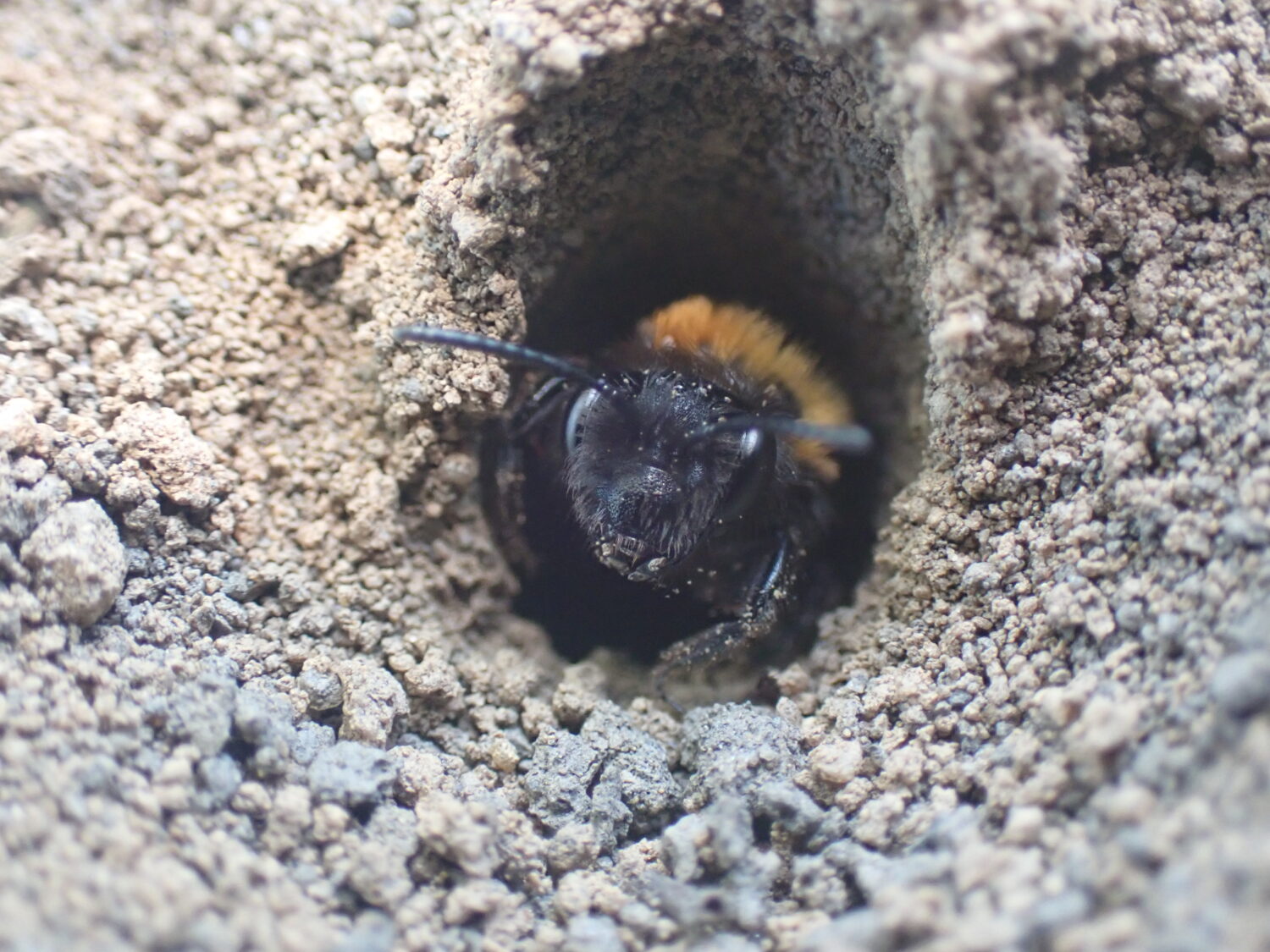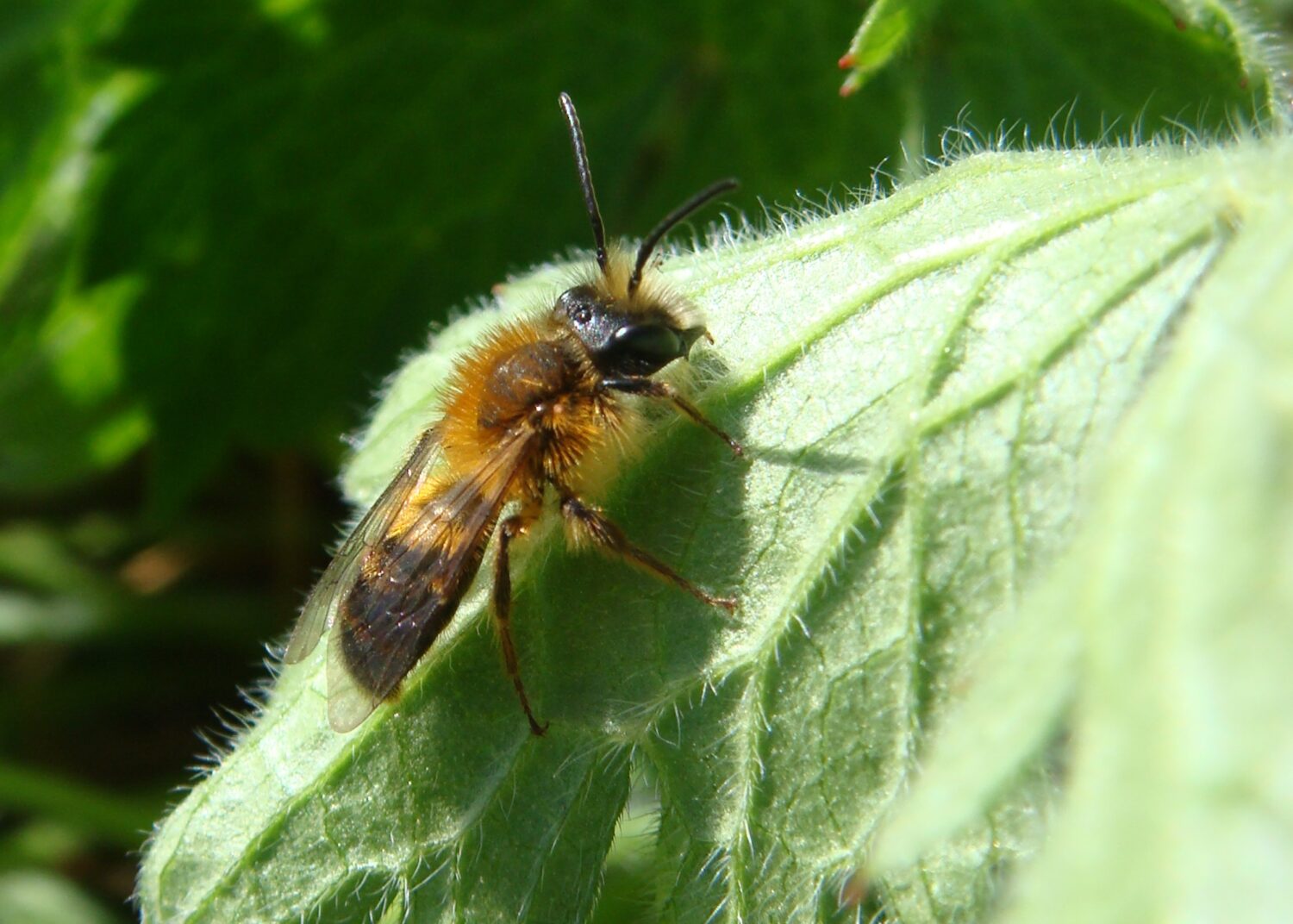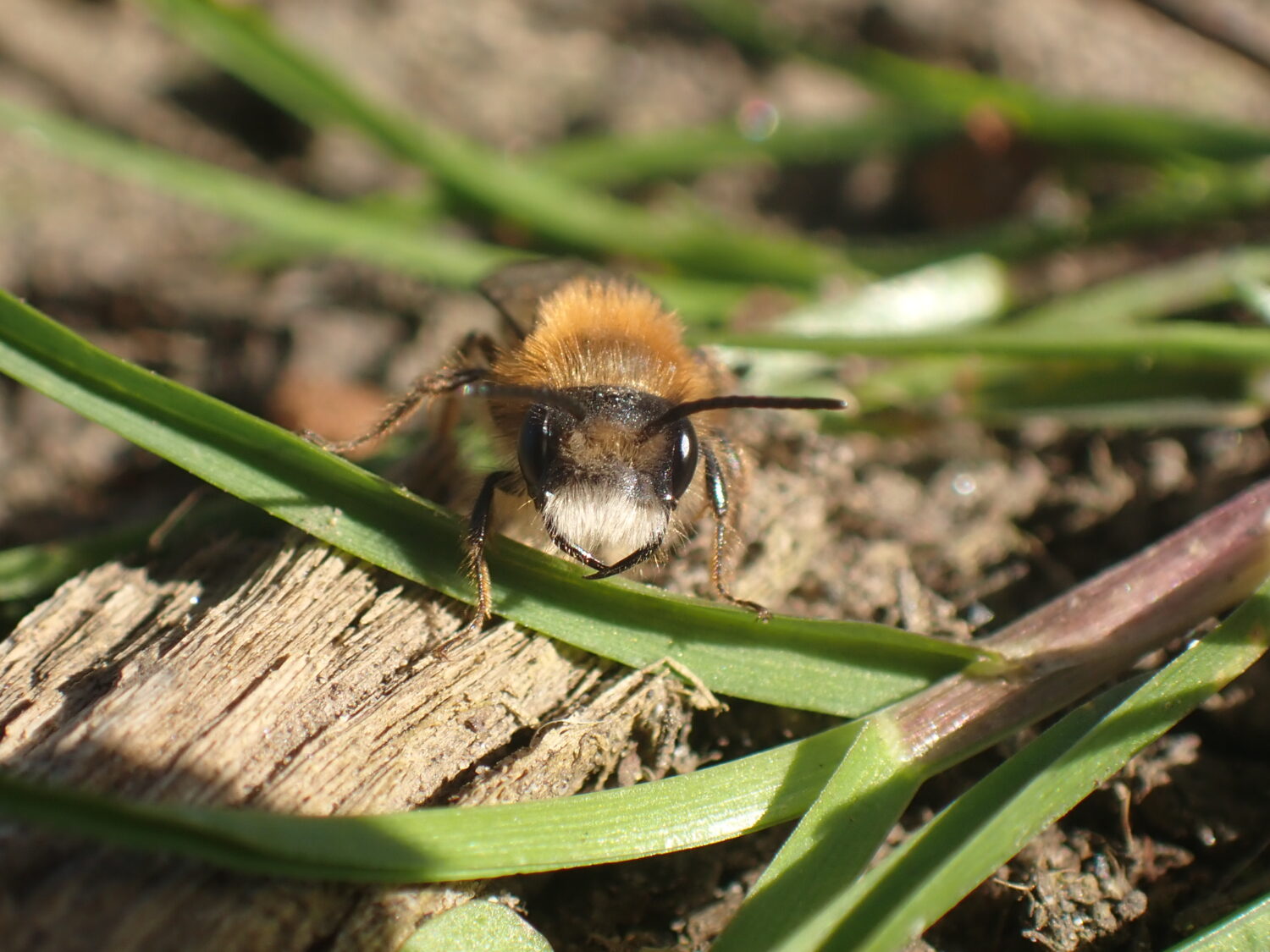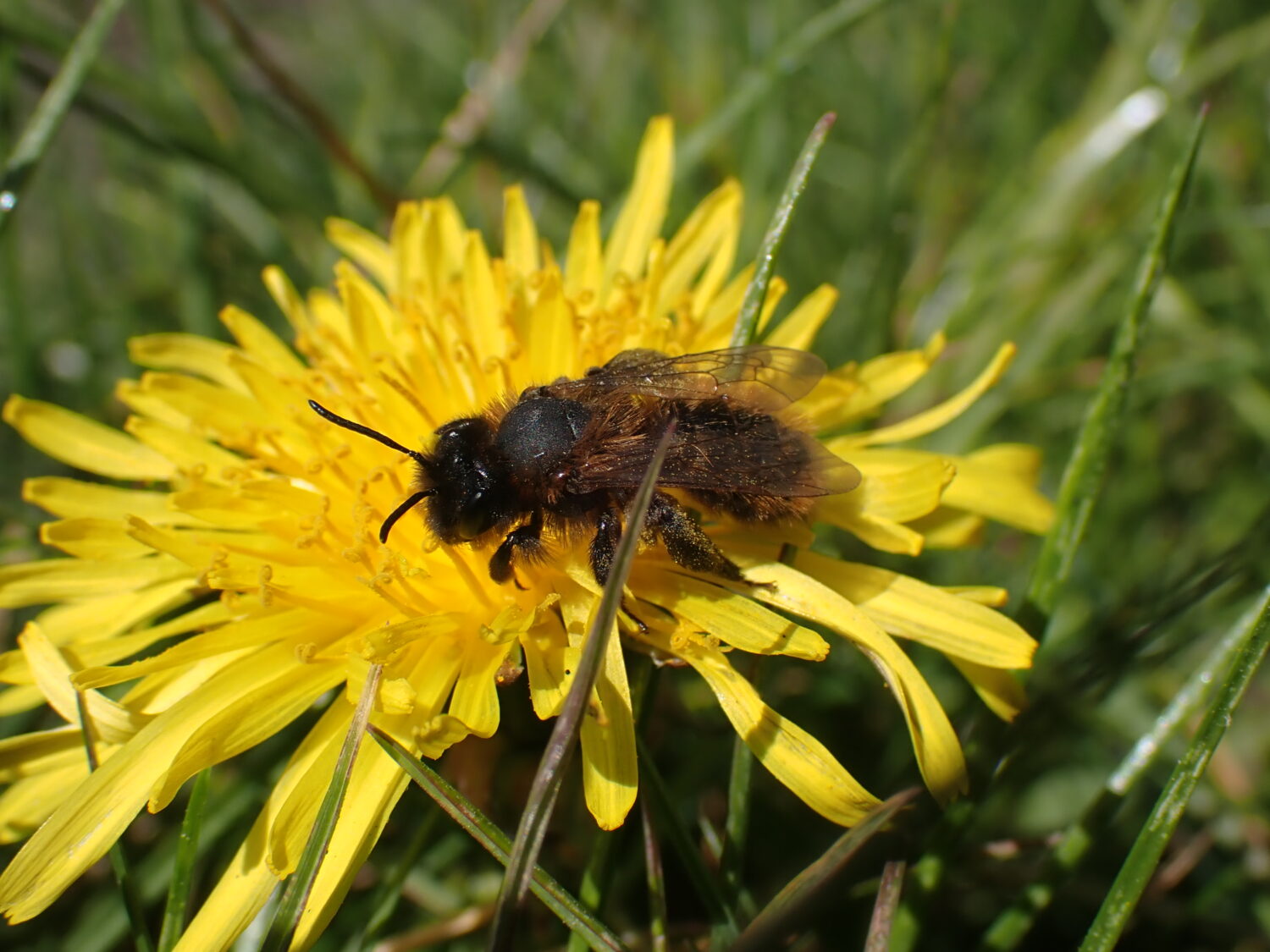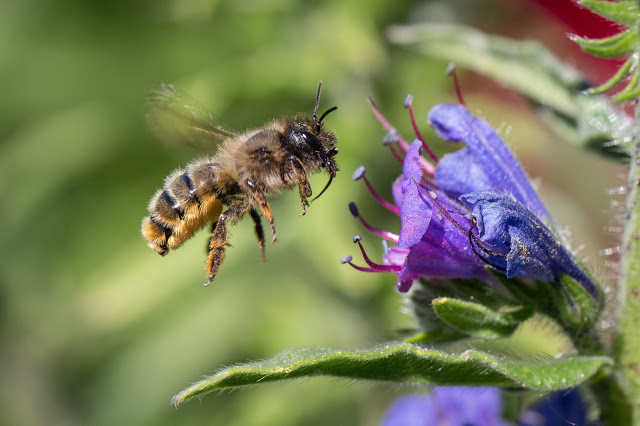Andrena fulva
Fast facts
- Common name(s)
- Tawny Mining Bee
- Scientific name
- Andrena fulva
- Bee group
- A species of solitary bee, belonging to the 'Mining Bee' group
- When to see it
- March – June
Description
With a dense fox-coloured coat, female Tawny Mining Bees are one of the most distinctive solitary bees. Excavating nests in short vegetated ground, this species is frequently observed nesting in garden and park lawns. A spring-flying species, this is one of the first solitary bees to be seen in the year.
Identification
Females
The honeybee-sized females are unmistakable with dense, fox-coloured coats. The head, legs and underside are black-haired.
Did you know?
The ‘fulva’ of this species’ scientific name comes from the Latin for ‘tawny’, referring to the colour of this species’ coat.
Males
Males are difficult to identify and separate from similar species. Males are smaller and slimmer with brown hair and very long mandibles (jaws). The white facial hair of the males is often referred to as an ‘Einstein’ moustache. Confident identification can be achieved by looking closely at the males’ antennae in a high quality photo: the third antennal segment is much longer than four.
Explore more images of the Tawny Mining Bee here
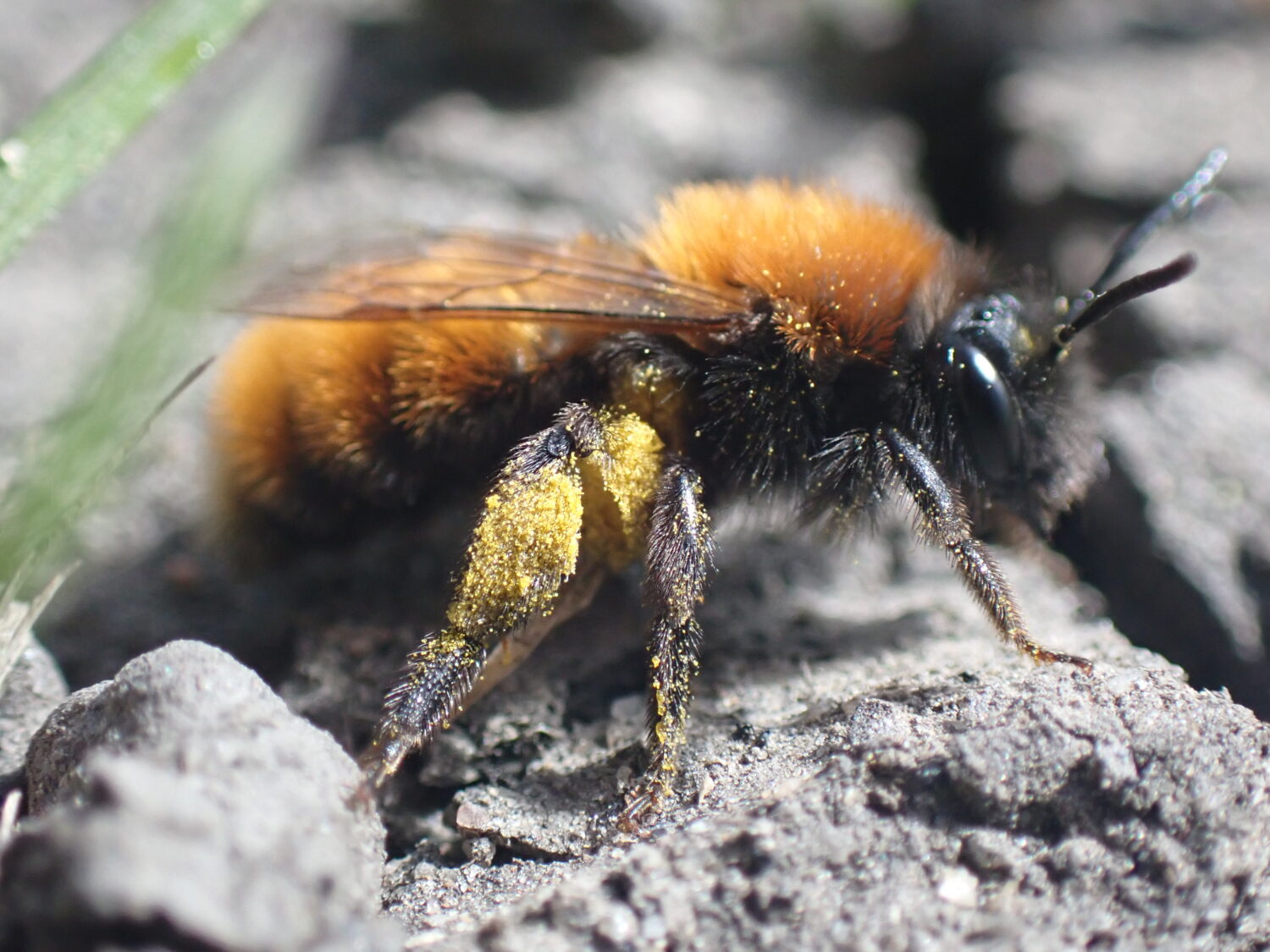
Spotted this bee?
Share your sighting of the Tawny Mining Bee and other North East Bee Hunt target species to contribute to the conservation and study of our region’s bees.
Similar species
Red Mason Bee
Faded females of the Tawny Mining Bee could with confused with Red Mason Bee (Osmia bicornis) females. However, Red Mason Bees have a light-brown thorax, orange-red abdomen and two facial ‘horns’. Red Mason Bees have orange pollen-collecting hairs on their underside whereas Tawny Mining Bees have black hairs on their underside and collect pollen on their hind legs. The Red Mason Bee is also a target species of the North East Bee Hunt and its species profile can be viewed here.
Ecology
As their name suggests, females excavate or ‘mine’ into the earth to create their nest burrows. This results in a characteristic volcano-like mound of spoil around their nest entrances. A common resident of urban areas, females can be observed nesting in garden lawns and parks. Although solitary, females will nest close together in suitable places to form aggregations.
This spring-flying species is found in a great variety of habitats and early-flowering shrubs are important sources of nectar and pollen. Females collect pollen on their back legs and use a waterproof substance to line their nests, each containing an egg provisioned with pollen and nectar. Males are often found flying around the nesting sites of females in search of a mate.
More information on the Tawny Mining Bee can be found here
Regional Distribution
The Tawny Mining Bee can be found across the North East in lowland areas with a few upland records. Records become scarcer further north. In 2020, the North East Bee Hunt received 66 records of this species from south Northumberland and County Durham. It is a widespread bee in much of England and Wales, and more recently, it has been recorded for the first time in Scotland.
